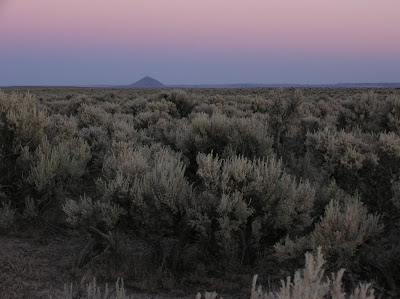 To my delight and amazement, the four largest moons of Jupiter were all to be seen. One was on the left side, very close to the planet. To the right, another hovered about four Jovian diameters away ... and right against the right side of Jupiter the two remaining moons sparkled. One nearly touched the edge, and I'm sure if I look again soon it will have either passed in front of, or behind, the planet. Even with the faint haze, the two further moons show in this photo ... and the closer ones disappear in the bright haze illuminated by the Jovian glow. Through my scope the dark bands can be clearly seen. If you're a sky-watcher, this week is a great time to look up!
To my delight and amazement, the four largest moons of Jupiter were all to be seen. One was on the left side, very close to the planet. To the right, another hovered about four Jovian diameters away ... and right against the right side of Jupiter the two remaining moons sparkled. One nearly touched the edge, and I'm sure if I look again soon it will have either passed in front of, or behind, the planet. Even with the faint haze, the two further moons show in this photo ... and the closer ones disappear in the bright haze illuminated by the Jovian glow. Through my scope the dark bands can be clearly seen. If you're a sky-watcher, this week is a great time to look up!

It would take more knowledge than I have to say for sure which moon should go by which name. After all, one may appear close, but really be at a greater distance from Jupiter. Wouldn't it be fun to watch hour after hour, night after night, until one knew which was the inner, and which the outer, moon?
And, if you're an early riser ... Mercury is making one of only two appearances this year about a half-hour before sunrise, seen right where the sun will soon rise, visible even after all the stars have been obscured by the brightening morning sky. I'm not much of a morning person, so you'll have to tell me about it!














